Broadsword takes the Barnes bullet for a spin. Is the original copper projectile that kicked off the lead-free revolution still the best?
Next in our line of lead-free bullet tests are the .30 cals on offer from Barnes in their Triple Shock X bullet range, which was introduced in 2003. These offer an all-copper bullet with a traditional hollow-point design in the TSX format, or faster expanding projectiles with the newer TTSX bullets with their polymer tip and larger hollow point format. Barnes offer a very good range of both bullet styles as well as variety of calibres, so there is something for everyone and every rifle type.
As usual we are trying to find a sweet spot where the lead-free bullets perform the same ballistically down range as traditional lead-cored bullets of the same weight, thus giving the shooter a viable lead-free option when the time comes – if you can get any!
 credit: Archant
credit: Archant
Bullet specifications
The TSX and TTSX bullets are not the same dimensionally. Different bullet lengths have implications on load density and accuracy as well as overall cartridge length, but we will discuss that in future articles. At present I am trying to load like for like to see the similarities and differences.
TSX
This is the original Triple Shock-style bullet from Barnes, with an all-copper construction available in flat base and boat tail designs. The 110gr TSX weighs 110.2gr, is 0.9540" long, 0.3070" in diameter, and has two smooth cannelure/pressure rings called Accu-Grooves and a flat base. The hollow point is very neat and uniform, and when sectioned can be seen to extend 0.4250" into the bullet – but it is very narrow, as is the opening. This bullet has a sectional density (SD) of 0.166 and ballistic coefficient (BC) of 0.264, with an overall length of 0.955".
The 130gr TSX weighs 130.6gr, is 1.0860" long with the same 0.3070" diameter, Accu-Grooves and hollow point design, but this time with a slight boat-tail base. The SD is good at 0.196, as is the BC at 0.340 G1 – a very nice blend of values.
The 150gr TSX as expected is 1.2365" long, with a more obvious boat tail, and the same hollow point and diameter as the others, but with three Accu-Grooves to relieve stress/friction and fouling. A decent SD of 0.226 helps penetration and the BC of 0.369 value helps retain energy with a more streamlined flight.
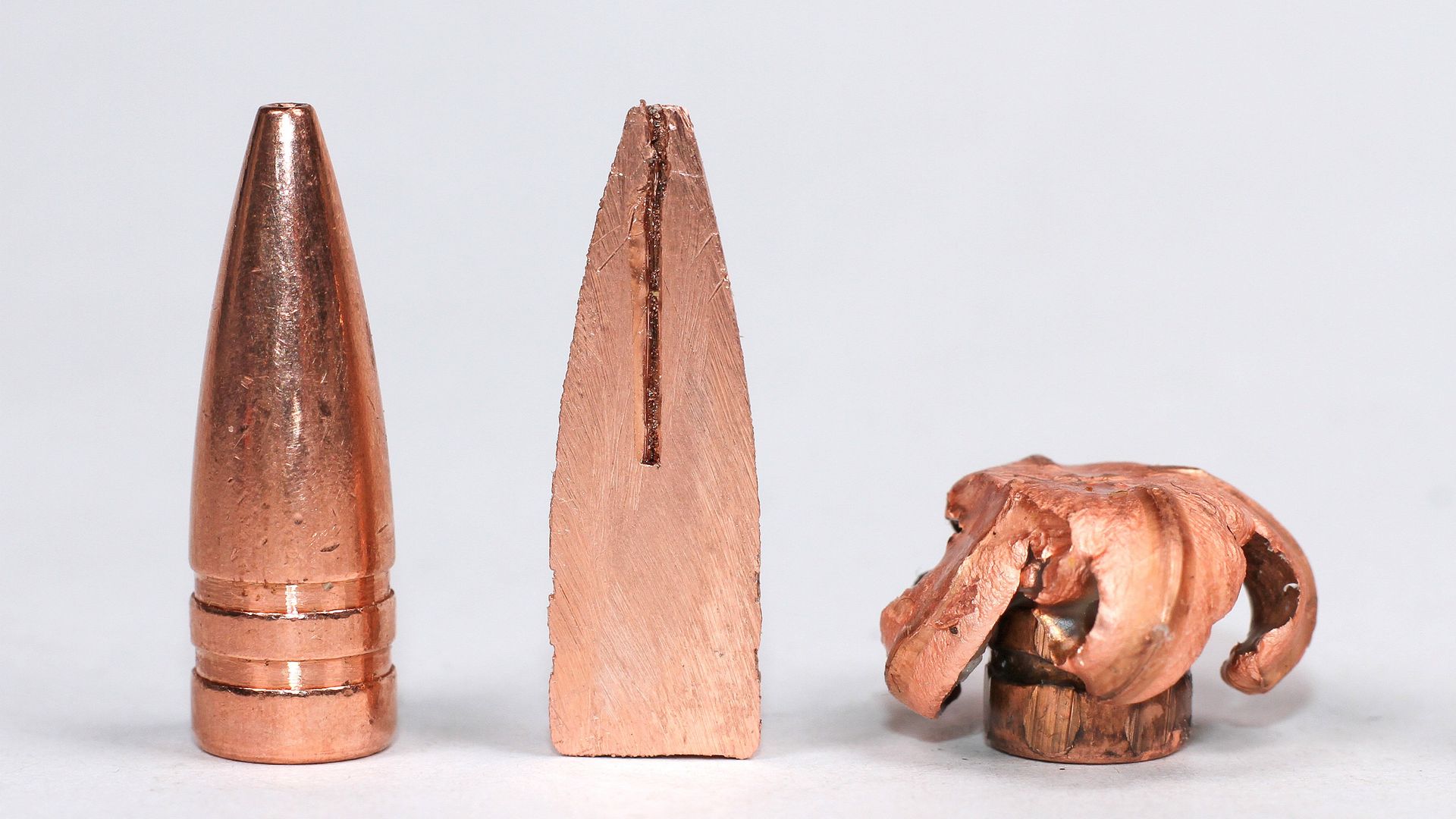 credit: Archant
credit: Archant
 credit: Archant
credit: Archant
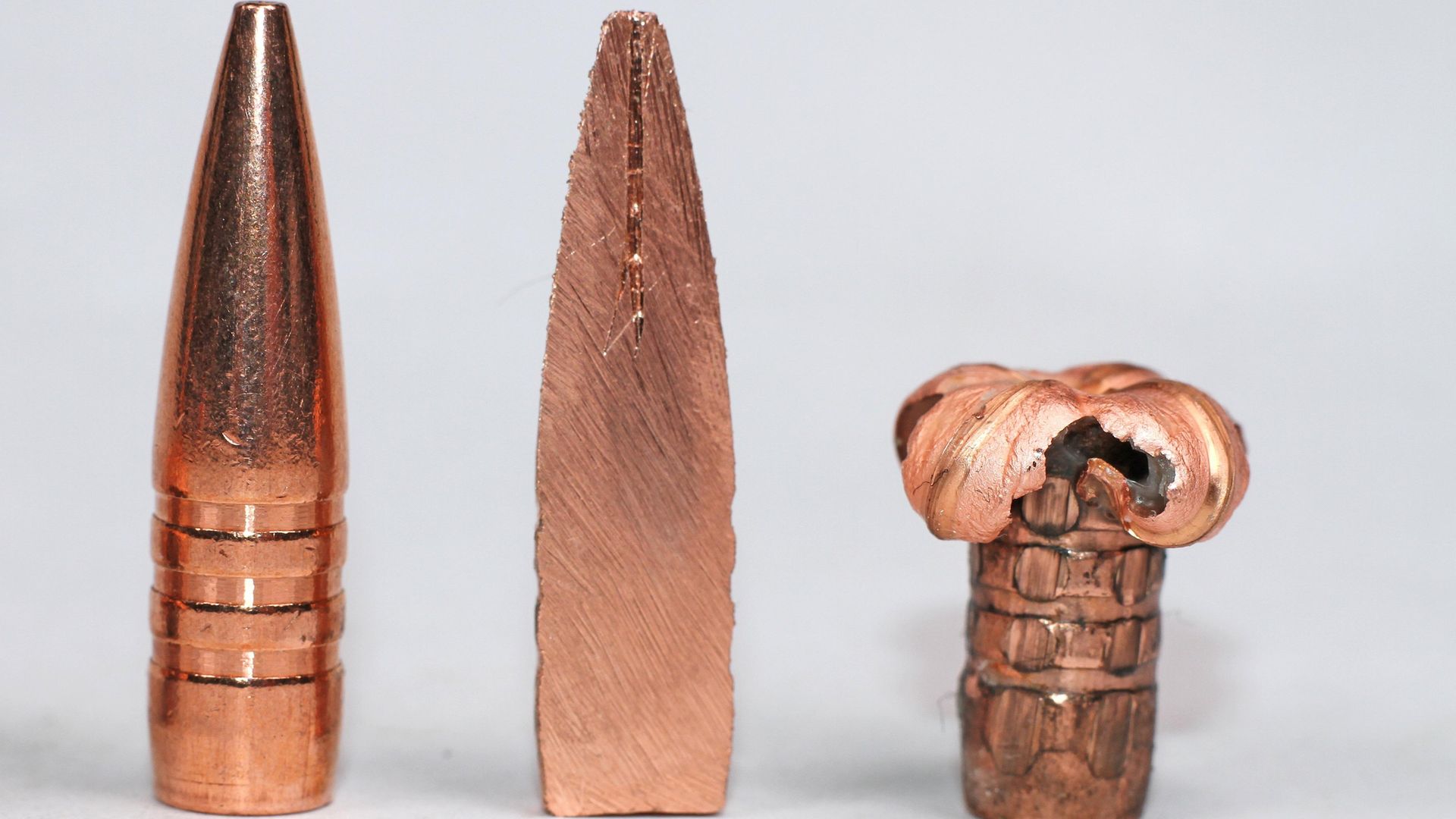 credit: Archant
credit: Archant
TTSX
This is essentially the TSX bullet with an added tip for better aerodynamics, hence the enhanced BC values as well as better terminal expansion with its redesigned nose cavity.
There is a 130gr TTSX bullet option but I could not get any for the tests. The 110gr TTSX weighs 110.4gr and is 1.0425" long with a diameter of 0.3060". It has a flat base, two Accu-Grooves and a large blue polymer tip 0.1825" long and 0.1465" in diameter, giving a better overall hollow point than the TSX bullet. When sectioned, the bullets have a larger hollow point channel for nearly half their overall length. The sectional density is the same as in the TSX with the same weight obviously but the BC has increased to 0.295 due to the more streamline tipped bullet meplat.
The TTSX 150gr bullet weighs 151.0gr and is 1.3015" long and again slimmer than the TSX bullets at 0.3060", which is slightly curious. There are Accu-Grooves, resulting in three distinct riding rings and there is a shallow boat tail and the same polymer tip as on the 110gr TTSX. The 110gr TTSX’s SD of 0.226 is identical to the same weight TSX version but the polymer tip boosts the BC to 0.420 – a sizeable improvement over the 0.369 for the same weight TSX bullet.
Standing the bullets side by side, you can instantly see the differences in height and overall aerodynamic design despite having the same weights. Most of this is the extra tip of the TTSX bullets, but the cannelure positioning is also different. Because the hollow points and expansion channel are bigger on the TTSX, the bullet has to be longer to achieve the same weight as the TSX bullet. A separate article on OAL/accuracy for all bullets tested will appear in a subsequent issue.
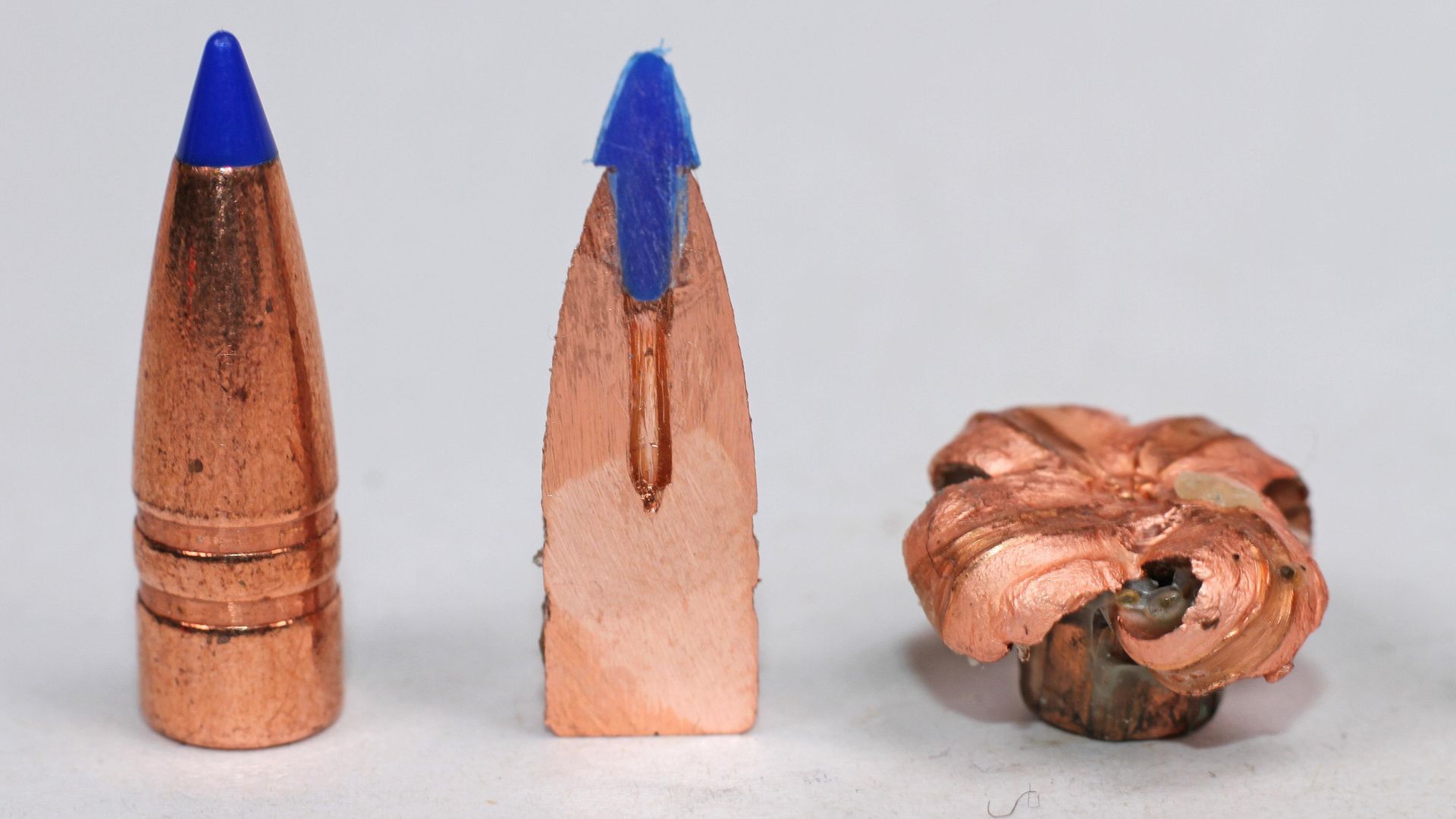 credit: Archant
credit: Archant
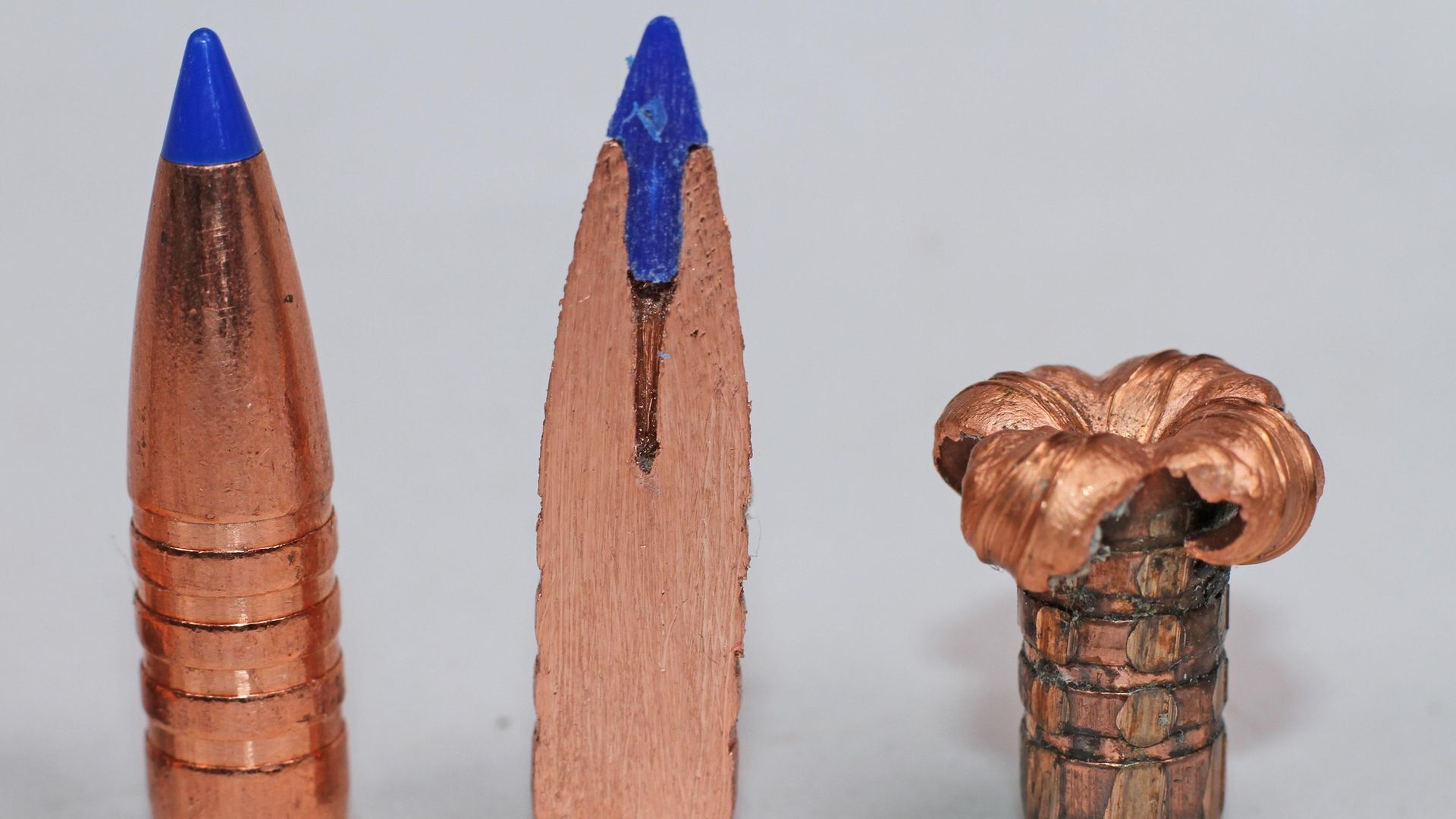 credit: Archant
credit: Archant
Reloads
I tested the Barnes bullets the same day as the Nosler lead-free E-Tips in a previous article, and therefore used the same control sample of Nosler Ballistic Tip bullets as a comparison for lead-cored bullet performance. The numbers in brackets are the Harrell Premium Culver powder values I use for instant powder measuring. I tried to match the velocities as best I could to get a true reflection of each bullet’s down-range performance.
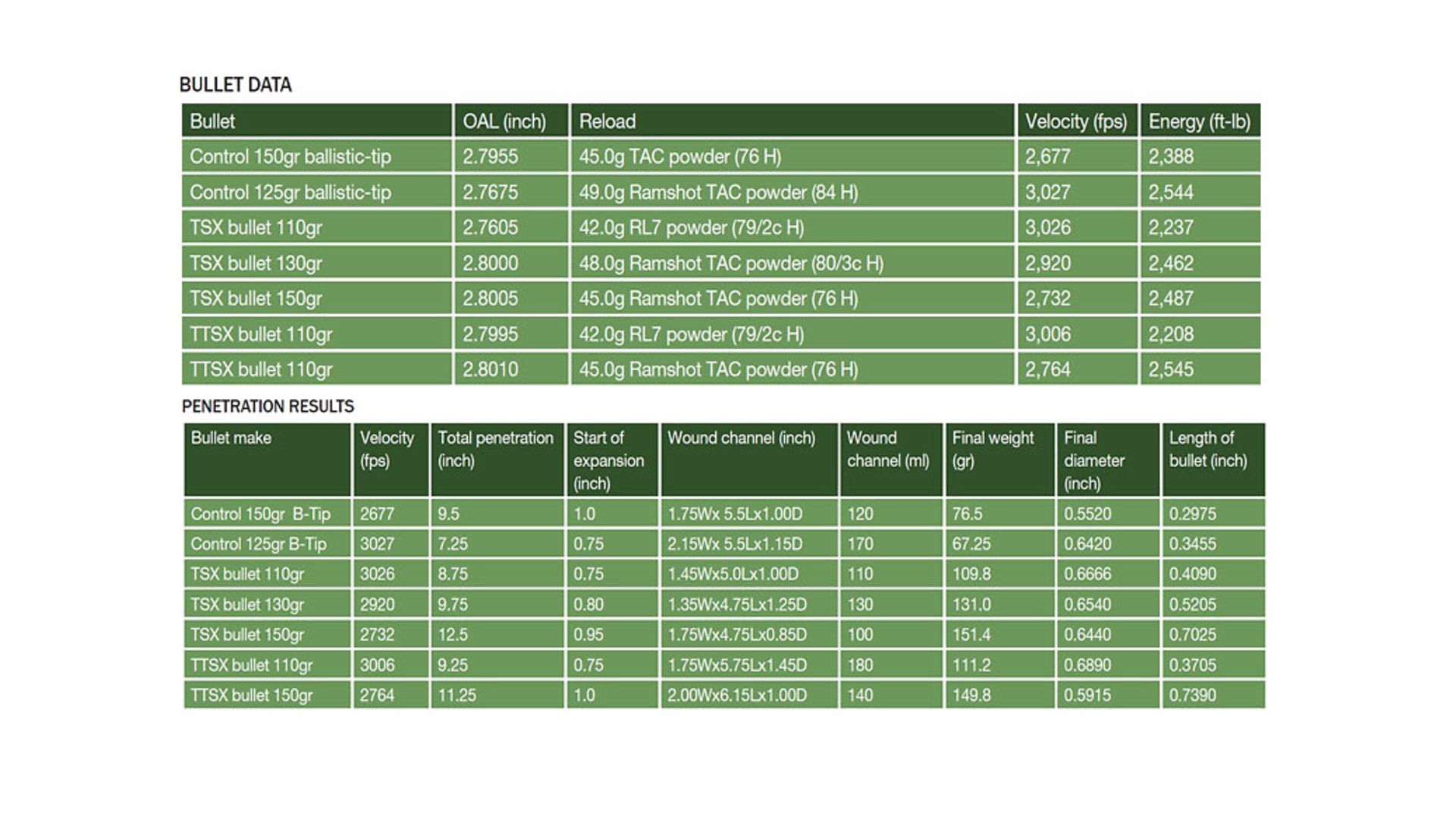 credit: Archant
credit: Archant
Results
We are trying to see what weight a Barnes bullet needs to be to achieve the same wound channel and expansion/penetration as a corresponding weight traditional lead-cored bullet.
Ballistically the TSX and TTSX were similar to the Nosler Ballistic Tip control group when loaded with the same powder/primer, etc. But as always, the harder Barnes gave at least 50fps faster velocities. A lead-cored bullet’s jacket gives a little when travelling down the bore, while the solid-cored Barnes are more rigid, causing a pressure increase and thus more velocity. That’s why the TSX and TTSX have cannelures to relieve the pressure a little and reduce copper fouling in the bore as the rifling engages the riding bands.
Interestingly the TSX bullets all have a 0.3070" diameter and the TTSX even smaller at 0.3060", again to reduce friction. All the bullets retained near as damn it 100% of their weight plus a bit of media.
Now the interesting part regarding down range performance. The TSX bullets expanded very well; they always do, despite that small hollow point aperture and channel. The 110gr bullet expanded to 0.6666", doubling its size – beastly! The 130gr TSX expanded to 0.6540" and the larger 150gr TSX to 0.6440"; all impressive. This translates down range to good terminal ballistics. The 110gr TSX penetrated to 8.75" with a wound channel of 5.0", maximum width of 1.45" and volume of 110ml. That’s almost the same as the 150gr Nosler Ballistic Tip at 120ml volume. Looking good.
The heavier 130gr TSX penetrated further, to 9.75", with a wound channel of 4.75", maximum width of 1.35" and volume of 130ml – very good indeed. The 150gr TSX penetrated the most at 12.5", with a wound channel of 4.75", max width of 1.75" and 100ml in the medium.
To me this proves that going lighter to 110gr or 130gr in a lead-free bullet is needed to replicate your older 150gr traditional 0.308 bullet loads with the TSX bullets tested. The 130gr looks very interesting, with a good blend of penetration and expansion, as well as excellent wound volume. I use them in my .30-47L rifle.
Next up the TTSX bullets. Will these tipped projectiles prove a point? The 110gr TTSX actually penetrated further than the same weight TSX bullets at 9.25" and gave an impressive 5.75" wound channel with a maximum width of 1.75", resulting in a whopping 180ml volume. That’s 10ml more than the control Nosler Ballistic Tip 125gr bullet at nearly the same velocity. Impressive.
Again there was 100% weight retention and bullet expansion was an amazing 0.6890", up from 0.3060". The 150gr TTSX also impressed as it penetrated the most at 11.25". I thought it would expand more with the better hollow point like its 110gr sibling, but still managed a 0.5915" bullet diameter. The wound channel was impressive, recording a wound channel of 6.15", maximum width of 2.00" and 140ml volume.
You should also note that the larger projectile weights carried their wound channels in a linear line for longer, but outside the critical test media and thus animal body cavity. We don’t need total penetration in the UK, although our American cousins do seem to be obsessed with it.
It was also interesting to see the blue polymer tip being fragmented almost at the start of the wound channel to begin the initial expansion of the TTSX bullets. Again, note how clean the wound channels are with these Barnes bullets. You can see how the bullet rotates in flight as the medium has a definite swirl to its inner profile. People forget that a bullet’s rotation also helps to dissipate energy for a quick dispatch on game. There was no wandering of the bullets through the medium with either and these Barnes shot very true in flight.
Before the tests began, I would have said to go with the 110gr TSX or TTSX if you wanted the same performance as a normal lead-cored 150gr .30 cal bullet. That is still true. Look at the 110gr TSX’s 110ml volume and that amazing tipped TTSX 110gr bullet, which at the same velocity as the TSX gave 70ml more wound volume in the same area.
The 130gr bullet, as discussed, would be a good lead-free all-rounder for penetration and performance. I have to admit I was expecting more from the 150gr TTSX, having seen its smaller brother perform so, well but a 140ml wound channel is still 20ml more than a conventional 150gr ballistic tip. Which when you think of it means that a Barnes TTSX at 150gr mimics the traditional 150gr lead-cored control bullet weight for weight. Ah ha! We might be on to something!
 credit: Archant
credit: Archant
Conclusions
Of the lead-free projectiles tested thus far, these offerings from Barnes seem to deliver good consistent performance. The lighter bullets give the desired combination of wound channel and volume within a more confined space – i.e. there is less penetration, which means the bullet’s energy is dumped inside the beast without over-penetration, which has always been a problem with some lead-free bullets. Also, the tipped TTSX Barnes would definitely seem to offer a very good expanding lead-free option if you still want to retain the same weight bullet that you usually use in your rifle.
I would say from a purely subjective view point that there might be some light at the end of the tunnel with regard to changing over from lead to non-lead projectiles. The trouble is supply and demand, as prices are high even if you can buy them to test. Also, as we will explore in future articles, the issues regarding load density, seating depth and rifling twist for best accuracy, make this a whole new ball game!
Contacts
RayTrade Ltd Tel: 01635 253344 Barnes bullets
Norman Clark Gunsmiths Tel: 01788 579651 Reload Supplies
Hannams Reloading Ltd Tel: 01977 681639 Reload supplies
Henry Krank Tel: 0113 2569163 Ramshot powders
Highland Outdoors Tel: 0845 0990252 Nosler Ballistic Tip
Edgar Brothers Tel: 01625 613177 Alliant Powders